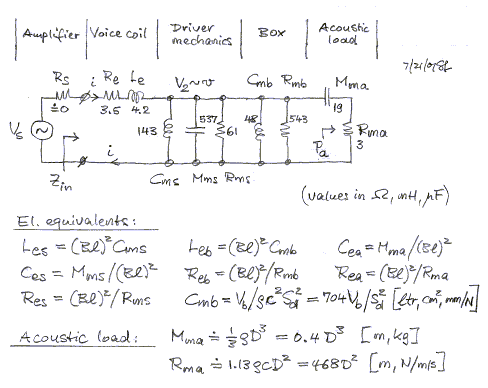Hi,
I am doing a calculus project in which I will build a subwoofer (already done), and show the math involved with tuning the box based on the theil small parameters. the box is sealed with a db500 12"
12" dB-500 SVC
Qts 0.447
Qes 0.481
Qms 6.347
Fs 24Hz
Res 3.25Ω
Ls 2.36
Lp 3.51
Rp 2.91Ω
Dia 241mm
Vas 71.5l
mms 169g
cms 244um/M
bl 13.3Tm
Spl 86dB
I'm kind of in a bind here and need some quick replies. thanks a lot in advance.
Roald
I am doing a calculus project in which I will build a subwoofer (already done), and show the math involved with tuning the box based on the theil small parameters. the box is sealed with a db500 12"
12" dB-500 SVC
Qts 0.447
Qes 0.481
Qms 6.347
Fs 24Hz
Res 3.25Ω
Ls 2.36
Lp 3.51
Rp 2.91Ω
Dia 241mm
Vas 71.5l
mms 169g
cms 244um/M
bl 13.3Tm
Spl 86dB
I'm kind of in a bind here and need some quick replies. thanks a lot in advance.
Roald




 :B
:B
 I guess it gets into diffeq if you want to study what the system is doing at any point in time rather than the overall SPL response but the overall response looks pretty straight forword with SL's formulas -- basically what WinISD, etc do.
I guess it gets into diffeq if you want to study what the system is doing at any point in time rather than the overall SPL response but the overall response looks pretty straight forword with SL's formulas -- basically what WinISD, etc do.



Comment